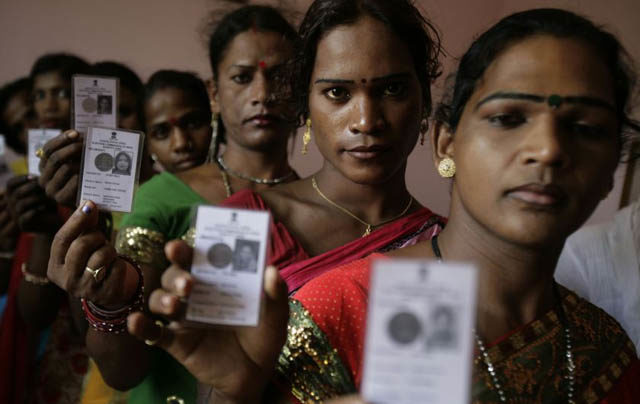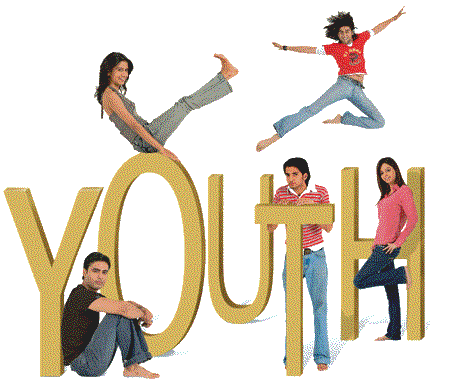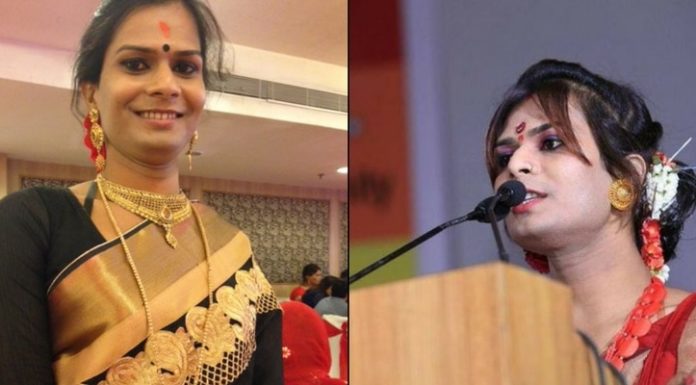A Transgender person is someone whose gender identity is different from their assigned gender. It is typically used as an umbrella term to cover all those who do not belong to a strictly-defined gender identity. Some definitions conceptualise transgenders as a third gender, apart from masculine and feminine, and may include those who practice cross-dressing as well.

In India, transgenderism is closely identified with the term ‘hijra’. Legally, hijras have been granted the status of a third gender in India, as well as in Pakistan and Bangladesh. Despite this, most hijras live on the margins of society, and are ostracised, with few employment opportunities available. With employment opportunities very limited, they depend on demanding money by disrupting public gatherings. Others engage in begging on streets alongside common beggars, while many more are engaged in prostitution.
In April 2014, a landmark Supreme Court judgement granted transgenders the right to identify as a separate gender for government documents and voting and so on. Though implementation might take time, a bill has been passed in Parliament requiring this to ensure that transgenders are treated as a minority community and granting them access to jobs and education.
Historically, however, the hijra community is said to have existed since ancient times, with references dating to four millennia ago. There are references to tritya prakriti or transgenders in the KamaSutra. Certain deities are also closely associated with the transgender community. Bahuchara Mata is a goddess whose temple in Mehsana, Gujara is a pilgrimage site for many transgenders. The ardhnari form of Lord Shiva, which is considered a merging of the forms of Lord Shiva with his consort Parvati is also worshipped.
In the Ramayan, a reference to transgenders is also made, where in they are among the citizens of Ayodhya who follow Lord Rama into exile. When he commands the ‘men and women’ of the city to return to their homes as he is entering the forests, the transgenders, being neither, remain on the edges of the forest for the duration of his exile. On his return, Lord Rama, impressed by their devotion, grants them to power to grant blessings on auspicious occasions. This is the source of the believe that a blessing from hijras on a wedding or birth in a family is beneficial.
Many hijras in India live in communities, formed around a proper social structure. There is typically a group leader, or ‘guru’ and the rest of the commune identify as her ‘daughters’. The communes are known to be very supportive and have a self-contained ecosystem.
For those not living in the communes, however, and trying to eke out an existence in middle-class India, life can be harder. For many of them, even their families are not supportive and many end up having to eke out a living on their own, or end up joining the hijra community.
Despite the challenges they face, there have been heartening instances of members of the transgender community achieving success in their chosen fields:
1. Kalki Subramanian, who has acquired two Masters Degrees and is a prominent journalist and activist.
2. Padmini Prakash, who is a well-known Kathak dancer and television personality
3. Manabi Bandopadhyaya is the author of a bestselling novel based on the life of Eunuchs, Endless Bondage, and a professor of Bengali.
Each person is unique, and gender identity is a deeply personal choice that needs to be respect at an individual level. The progress made by the transgender community in India needs to be celebrated and further encouragement given to their endeavours.































